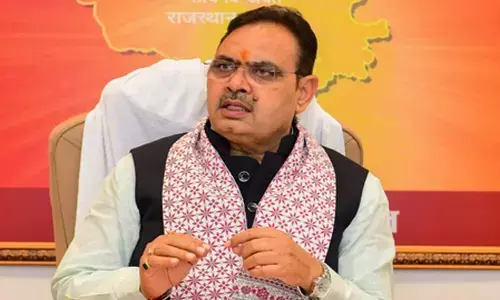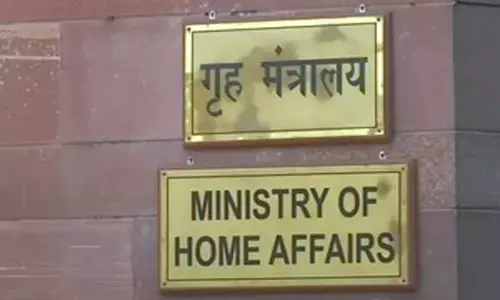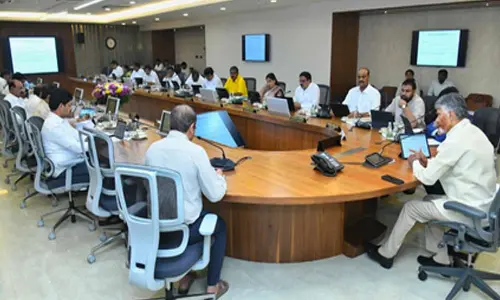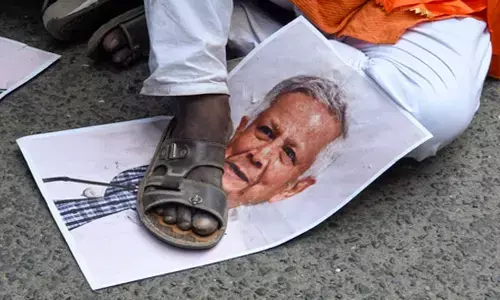North East Strife…Rooted in History

The ‘Jhoom’ cultivation – shift cultivation – began declining in the North East in general. Almost all States witnessed it, and it greatly impacted the region in several ways. People became dependent on employment. As not many opportunities were there, illegal ways of making fast money were explored and it created more problems
In the previous part, we discussed how and why the differences continued to brew among the people of the North East despite India’s independence and its integration process.
Mizoram was a district of Assam under the British. Entire Mizoram consists of a huge migrant population of South East Asia. About 95% of the population is of diverse tribal origins who settled in the state. The migration had begun from the 16th century but it happened mostly in the 18th century. This is the highest concentration of tribal people among all states of India.
The Mizo people are protected as a Scheduled Tribe. Mizo denotes overall ethnicity which claims descent from Sinlung, a mythical rock north of the Shan State of Myanmar. Mizos are mainly divided into tribes and sub-tribes. The major tribes that are found in the land of Mizoram are Chakma, Dulien, Ralte, Poi, Jahao, Pankhup, Lakher, Paite, Falam, Tangur, Khuangli, Dalang, Sukte, Fanai, Leillul and Mar.
The Mizo Union held back from the hill state movement, then joined the Mizo National Front supported by former chiefs in demanding a separate Mizo state. During the famine of 1958–59, the Indian state failed to provide aid to the hill people, and this neglect led to the Mizo armed uprising. Mizoram was detached from Assam as a Union territory in 1972. The 1986 Mizo Accord, reached after careful consultation as part of a peace process, was relatively successful and Mizoram was formed in 1987.
The clashes among the tribes of Mizoram area did not subside with the creation of a new State as the accord signed between the government and the Mizo National Front only addressed the concerns of the Lushais, the majority ethnic group. The Brus and the Hmars began to demand autonomous district or regional councils. Later, the Mizoram state government and the Hmar People’s convention came to an agreement after nine rounds of talks. The 1994 Memorandum of Settlement between the Mizoram State government and the Hmar People’s Convention led to formation of the Sinlung Hills Development Council (changed to Sinlung Hills Council in 2018). It took thirteen rounds of talks for the Mizoram government to strike an agreement with the Bru National Liberation Front.
The Chakma Autonomous District Council for Chakma people, the Lai Autonomous District Council for Lai people and the Mara Autonomous District Council for Mara people are the three autonomous district councils in Mizoram.
As for Nagaland, it lies between Myanmar to the east and Assam to the west. It adjoins Arunachal Pradesh to the north and Manipur to the south.
Nagaland is mostly mountainous except for the areas bordering Assam, which make up 9% of the area of the state. Mount Saramati is the highest peak at 3,840 metres (12,600 ft). Its range forms a natural barrier between Nagaland and Myanmar.
As of 2011, the state population was 1,978,000. Nagaland is one of three states in India where the population is mostly Christian, the others being Meghalaya and Mizoram. The people of Nagaland, collectively called Nagas, are in fact a number of very different tribes with mutually incomprehensible languages. It is home to 16 tribes: Angami Naga, Ao Naga, Chakhesang Naga, Chang Naga, Khiamniungan, Konyak, Lotha Naga, Phom, Pochury, Rengma Naga, Sangtam Naga, Sümi Naga, Yimkhiung, Zeme-Liangmai (Zeliang), Dimasa Kachari and Kuki. There are also members of the Rongmei Naga. Each tribe has distinct customs, language and dress.
The Naga National Council (NNC) was formed in February 1946 to work for autonomy for Nagaland. (The Nagas were given the opportunity to remain separate from India as a crown colony in fact. Ignore it for now as it is an entirely different story). Nagas are the most feared, it is said. Right from the British, everyone was interested in Nagaland but not Nagas. Such is their reputation. So much so that, even the Chinese are afraid of them.
After 1947, the Nagas continued to seek autonomy. In 1957, the Tuensang Frontier Division of the North East Frontier Agency was merged with the Naga Hills District to form the Naga Hills Tuensang Area, which became the state of Nagaland in 1963. The Naga People’s Convention met for three years to formulate the demands that led to the Sixteen-Point Agreement of 1960. This agreement with the Government of India led to formation of the State of Nagaland. The Sixteen-Point Agreement left out the Naga National Council, which was an underground organization at the time. The Burma-India Boundary Agreement of 1967 finalised the boundary between the two countries, cutting from north to south through Naga country.
The Naga National Council signed the Shillong Accord of 1975. The NNC was discredited after signing the accord as usually happens. The more militant National Socialist Council of Nagaland (NSCN) broke away from the NNC in 1987. The National Socialist Council of Nagaland emerged as the most powerful force later. In 1988 this group in turn split into the NSCN (Isaac-Muivah) and the NSCN (Khaplang). As of 2011, these two groups had accepted a ceasefire and were in negotiations with the Indian government. Nagaland is thought to have significant oil resources. The Nagas want reassurance that oil extraction will not damage the environment, and that if they are forced to relocate, they will receive land as well as money in compensation.
This was also a period when ‘jhoom’ cultivation – shift cultivation – began declining in the North East in general. Almost all States witnessed it, and it greatly impacted the region in several ways. People became dependent on employment. As not many opportunities were there, illegal ways of making fast money were explored and it created more problems.
We must also keep it in mind while evaluating the problems of the region now.
Woman injured in stabbing attack in Tokyo, suspect at large
Bengal cop booked for murder over mysterious death of woman home guard, SIT to probe case
Staffer recalls horror of 7-kg gold robbery by armed gang in Karnataka’s Hunsur
25-Year-Old Airline Cabin Crew Member Dies At Gurugram Party; Police Begin Investigation















